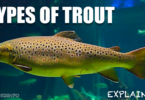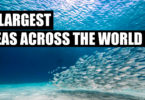Blue marlin has captured the hearts of anglers and ocean enthusiasts for many generations. Their sleek appearance makes these magnificent fish a true marvel of the deep waters. However, in recent years, concerns about the status of the population of blue marlins have begun to rise – are blue marlins endangered, or are they still thriving in our vast oceans? This article will explore the world of blue marlins to uncover the mystery behind their existence.
What are Blue Marlins?
Blue marlins are scientifically known as Makaira nigricans the apex predator of the aquatic world. These extraordinary creatures can reach a length of up to 12 feet and weigh around 2,000 pounds. Their striking appearance is characterized by a muscular body, and striking cobalt-blue coloration on their backs, which fades into a silver-white belly. They are impressive swimmers and are capable of reaching speeds of 82 miles per hour, making them a sought-after target for sport fishing enthusiasts.
What Threats Does Blue Marlin Face?
To understand the conservation status of blue marlins, it’s essential to consider the various threats they face:
Overfishing: The large size and market value make Blue Marlins prized catches in commercial and recreational fisheries, leading to the decline in their populations.
Bycatch: Often Blue marlins are caught unintentionally as bycatch in fisheries and are then discarded, injured, or dead, contributing to the decline in their population.
Habitat Degradation: Their habitat often faces threats from habitat loss, climate change, and pollution. Changes in water temperature and altered ocean currents can also disrupt their migration patterns and feeding grounds.
Are Blue Marlin Endangered?
For many years, the conservation status of blue marlins has been a subject of concern. According to the Red List of IUCN, the blue marlin is classified as a Vulnerable species because it faces significant pressure from commercial and recreational fishing. However, this classification indicates that if the current trends continue then the blue marlin has a high risk of becoming endangered shortly.
What Efforts Should Be Made to Protect and Conserve Blue Marlins?
The following initiatives should be put in place to protect and conserve the population of Blue marlins:
Fisheries Management
Several states and local fisheries organizations have implemented regulations to effectively manage blue marlin fisheries. These regulations typically include catch restrictions, size restrictions, and closures to reduce fish pressure and protect spawning individuals.
Tagging and Research
Monitoring organizations and researchers develop tagging programs to monitor blue marlin movement and behavior. This information helps scientists gain insight into migration patterns and is essential for successful management and conservation.
Education and Awareness
It is necessary to educate and make people aware of the significance of fisheries for marine ecosystems. Education campaigns and outreach efforts help promote sustainable practices among fishermen and the fishing industry.
International Collaboration
Blue marlins migrate extensively and cross international borders, therefore, international cooperation is crucial for conserving blue marlins. Local fisheries management organizations and alliances are important for concerted conservation efforts.
Sustainable Fishing Practices
Encouraging the use of sustainable fishing gear and practices, such as release techniques that reduce bycatch and harm to stranded blue marlin can help preserve them.
Conclusion
Blue marlins are categorized as “Vulnerable” by the IUCN, indicating they are at a high risk of becoming endangered shortly. These magnificent species have formidable difficulties in surviving because of the persistent dangers of overfishing, bycatch, and habitat destruction. To ensure the long-term survival of this iconic species in the ocean, it is crucial to implement and enforce sustainable fishing techniques, reduce bycatch, and conserve their vital habitats.







